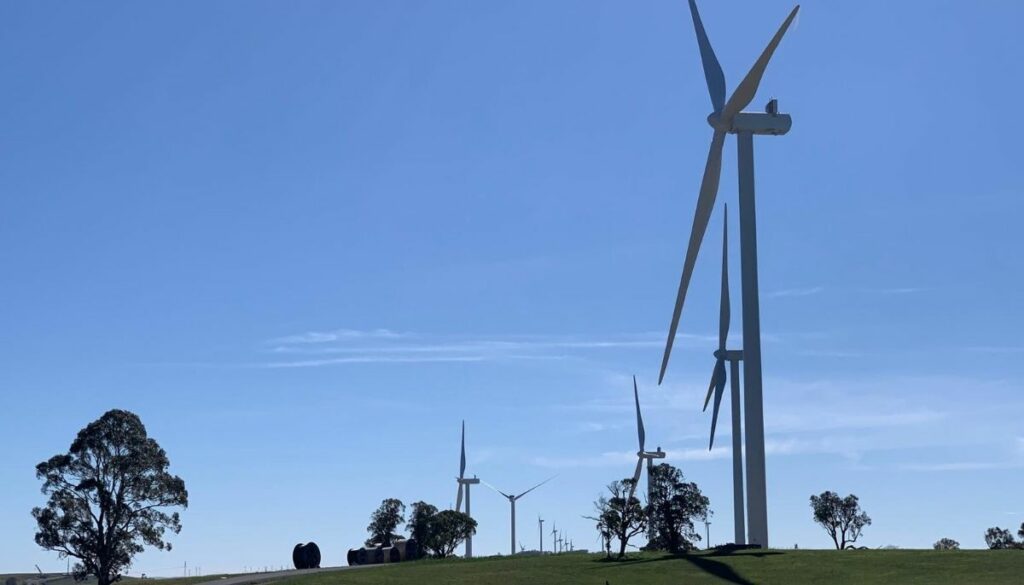ALDI Australia today announced that following a successful 40%[1] reduction of overall operational emissions intensity from a 2012 baseline, the supermarket is now committing to 100% renewable electricity to power its Australian operations by the end of 2021.
The commitment to be 100% powered by renewable electricity will be possible at the completion of a vast solar installation program and the recent procurement of two ten-year Power Purchasing Agreements (PPAs) with large scale wind farms. The wind farms, located in the New South Wales Southern Tablelands and Western Victoria, will provide renewable energy to all of ALDI’s New South Wales and Victorian stores. These will generate over 180,000 MWh of electricity and result in over 160,000t carbon emissions avoided each year.
ALDI will use the rooftops of its vast real estate portfolio to harness more than 15% of its total energy use from the sun. By the end of 2020, over 250 of ALDI Australia’s stores and six Distribution Centres will have solar installations, totalling 102,000 panels of onsite solar energy generation, preventing 41,000 tonnes of carbon emissions entering the atmosphere every year. This will see ALDI have Australia’s largest commercial and industrial solar rollout to date. This is the equivalent of taking 11,700 cars off the road per year or generating enough electricity to power 7,000 average Australian homes[2].
ALDI is the 64th biggest user of electricity in Australia[3], powering 555 stores and eight distribution centres around the country. The businesses’ shift to renewable energy sources should provide clear evidence to Australia’s top energy users that renewable alternatives are affordable when factored in to long term planning.
The commitment to renewable energy has driven ALDI’s investment in more efficient systems to reduce both energy usage and carbon emissions. This includes reducing energy consumption by LED lighting and energy efficient chillers, upgrading to natural refrigerants and installing solar power systems, currently on 175 stores and six distribution centres.
Tom Daunt, CEO of ALDI Australia, said, “We are proud to have built a reputation for providing customers with high quality products and an affordable shopping experience. As we continue our journey in Australia, we want to reassure our shoppers that how we conduct business is equally important as the value we offer.”
ALDI is the first to admit that it still has trucks on the road and an extensive supply chain that relies on fossil fuels. Mr Daunt continued, “We will continue to work within our business and closely with our business partners to reduce emissions and preference renewable sources of energy.”
ALDI Australia’s commitment to becoming 100% renewable is a part of the global commitment to achieve a company-wide target for climate protection endorsed by the Science-Based Target Initiative (SBTi). SBTi took a close look at the retailer’s international targets and validated them based on scientific criteria agreed by CDP, the United Nations Global Compact, World Resources Institute (WRI) and the World Wide Fund for Nature (WWF).
“Our commitment to only use renewable electricity is just one of many milestones we will announce as we drive towards our vision of zero carbon emissions,” stated Mr Daunt.
In a letter to its business partners, ALDI Australia has encouraged them to set their own science-based emissions targets by the end of 2024.
You can read about our commitment to renewables here.
Background Info
- The PPAs will be administered by RATCH, located in the NSW Southern Tablelands and Tilt Renewables, located in West Victoria.
- By end of 2020, ALDI will have 250 stores and six DCs with solar panels, a total system size of 31.6 MW potential, generating over 50,000 MWh of electricity and resulting in over 41,000 t emissions avoided (tCO2e/year).
- The wind farm partnership will generate over 180,000 MWh of electricity, resulting in over 160,000t carbon emissions avoided each year
- ALDI currently has 555 stores and 8 distribution centres.





